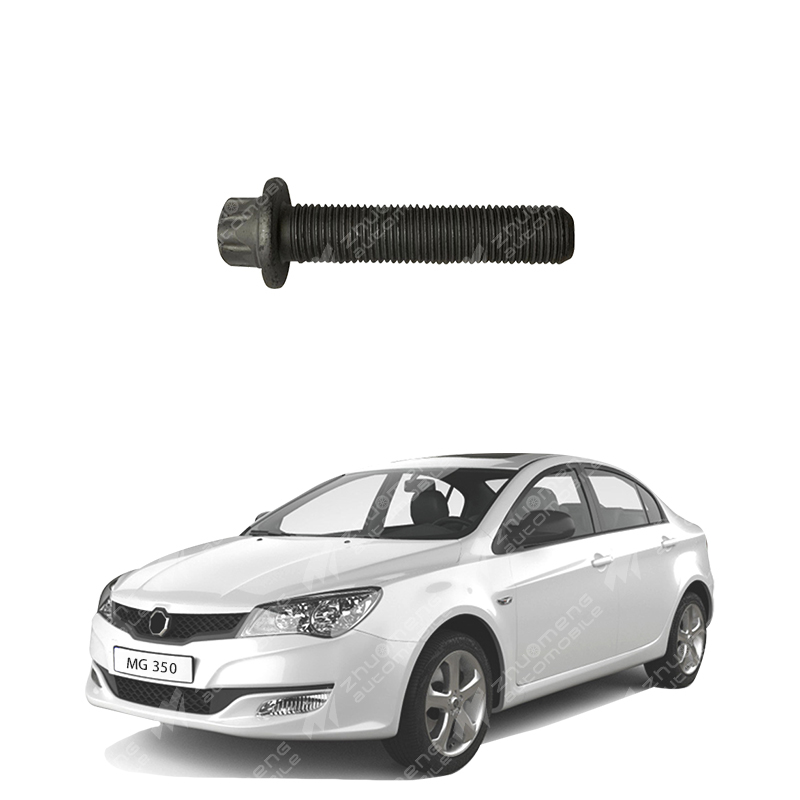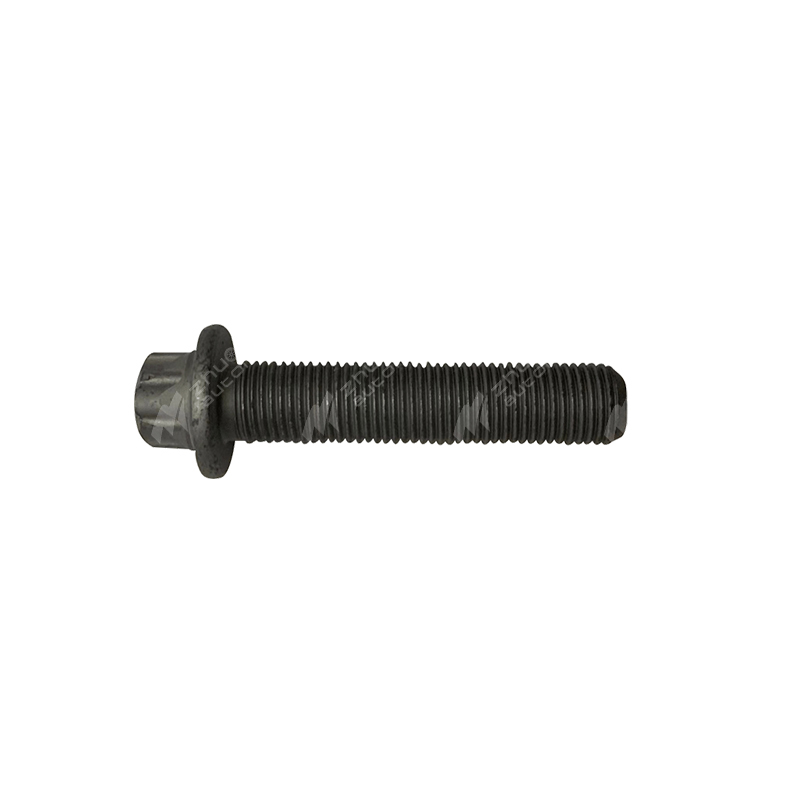Engine crankshaft flywheel group components
First, crankshaft
Crankshaft is one of the most important parts of the engine, its function is to withstand the gas pressure from the piston connecting rod group into the torque of the crankshaft and external output, in addition, the crankshaft is also used to drive the engine's valve mechanism and other auxiliary devices (such as generators, fans, water pumps, power steering pumps, balance shaft mechanism, etc.)
Crankshaft flywheel group: 1- pulley; 2- crankshaft timing tooth belt wheel; 3- crankshaft sprocket; 4- Crankshaft; 5- crankshaft main bearing (top); 6- Flywheel; 7- Speed sensor signal generator; 8, 11- thrust pad; 9- crankshaft main bearing (bottom); 10- Crankshaft main bearing cover.
When the crankshaft works, it must withstand periodic changes in gas pressure, reciprocating inertial force and centrifugal force, as well as their torque and bending moment under high-speed operation, easy to bend and twist deformation, therefore, the crankshaft should have enough strength and stiffness, good wear resistance and good balance. The crankshaft is generally made of medium carbon alloy steel, and the journal surface is treated by high-frequency quenching or nitriding. Shanghai Santana engine crankshaft is made of high-quality medium carbon steel die forging. The Audi JW and Yuchai YC6105QC engines are made of low-cost, high-strength rare earth ductile iron with good wear resistance.
1. Structure of crankshaft
The crankshaft is generally composed of a front end, a main shaft neck, a crank, a counterweight, a connecting rod journal and a rear end. A crank is composed of a connecting rod journal and its left and right principal journals. The number of crank of a crankshaft depends on the number and arrangement of cylinders. The crankshaft of a single cylinder engine has only one crank; The number of crank of the crankshaft of an in-line engine is equal to the number of cylinders; The number of cranks in the crankshaft of a V engine is equal to half the number of cylinders. The front-end shaft of the crankshaft is equipped with a pulley, timing gear, etc., which is used to drive the water pump and the valve mechanism. The spindle neck of the crankshaft is installed in the main bearing seat of the cylinder body and is used to support the crankshaft. The connecting rod journal is used to install the connecting rod, and the crank connects the main shaft journal with the connecting rod journal. In order to balance the centrifugal force when the crankshaft rotates, a balance block is provided on the crankshaft. A connecting flange is provided at the rear end of the crankshaft to connect the flywheel to the crankshaft by bolts. To lubricate the connecting rod journal, a lubricating passage is drilled from the main shaft journal to the connecting rod journal. The integral crankshaft is simple in structure, light in weight and reliable in operation, and generally adopts plain bearings, which are widely used in medium and small engines.
2. Layout principle of crank
The shape of the crankshaft and the relative position of each crank mainly depend on the number of cylinders, the arrangement of cylinders and the working order of each cylinder. When arranging the engine work sequence, the following rules should be followed as far as possible:
Make the two cylinders of continuous work as far apart as possible to reduce the load of the main bearing, and avoid the occurrence of two connected valves opening at the same time during the intake process, and the phenomenon of "air grab" affects the inflation efficiency of the engine.
(1) The working interval Angle of each cylinder should be equal to facilitate the smooth operation of the engine. Within the crankshaft Angle at which the engine completes a working cycle, each cylinder should work once. For a four-stroke engine with cylinder number i, the work interval Angle is 720°/i. That is, every 720°/i of the crankshaft should have a cylinder for work to ensure that the engine runs smoothly.
(2) If it is a V-type engine, the left and right columns of cylinders should alternate work.
3. Common multi-cylinder engine crank arrangement and working order
The arrangement of the crankshaft and crank of the in-line four-stroke engine. The work interval Angle of the in-line four-cylinder four-stroke engine is 720°/4=180°, the four crank are arranged in the same plane, and the engine working sequence (or ignition sequence) is 1-3-4-2 or 1-2-4-3. The working cycle thrust device commonly used has a single-sided semi-circular thrust pad with anti-friction metal layer, crankshaft main bearing with flanging and round thrust ring has three forms. The thrust pad is a semi-ring steel sheet with anti-friction alloy layer on the outside, which is installed in the groove of the body or the main bearing cover. In order to prevent the rotation of the thrust pad, the thrust pad has a bulge stuck in the groove. Some thrust pads use 4 pieces to form two positive circular limits, and some use 2 pieces of limits. The side with anti-friction metal should face towards the crankshaft.
Zhuo Meng Shanghai Auto Co., Ltd. is committed to selling MG&MAUXS auto parts welcome to buy.



